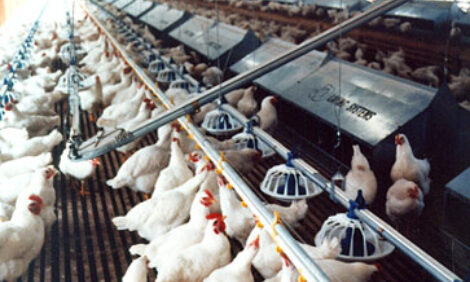



Enterococcus primarily affects broilers
Enterococcus cecorum causes vertebral osteoarthritis in broilersFor many years Enterococcus cecorum has been associated with its translocation from the intestine to the free thoracic vertebrae in broiler chickens, older than four weeks, causing vertebral osteoarthritis. Currently, the major concern is the presence of this bacterium causing severe systemic disease, lameness and high mortality in chickens younger than three weeks.
The Poultry Research and Diagnostic Laboratory (PRDL) at Mississippi State University is constantly evaluating the dynamics of the diseases caused by bacteria from the genus Enterococcus. Based on cases registered with the PRDL, an accession list was built including 604 cases received from January 2023 to October 2024.
The goals of a study by Autumn Gregg and colleagues at the University of Mississippi were: 1) to analyze the distribution of Enterococcus spp. cases and 2) to compare E. cecorum and Enterococcus faecalis age of presentation and presence of lesions. The results of the study were presented at the 2025 International Poultry Scientific Forum.
The prevalence of E. cecorum in both 2023 and 2024 was lower than E. faecalis. However, E. cecorum was more commonly isolated from cases with visible lesions, while E. faecalis was mostly isolated from young chickens without visible lesions and from hatchery samples with reports of a decrease in hatchability.
In 2023, there were 117 cases of E. cecorum and 223 cases of E. faecalis. E. faecalis was isolated from the yolk sac and embryos in 68% of the cases, while E. cecorum was isolated from the heart and liver in 40% of the cases. In 2024, there were 56 E. cecorum cases and 186 E. faecalis cases. Again, E. faecalis was isolated from the yolk sac and embryos in 65% of the cases, while E. cecorum was isolated from the liver, hock and femur in 40% of the cases.
Additionally, E. faecalis was primarily isolated from birds one week of age or less representing 85% (2023) and 82% (2024) of the cases. Along with this, 74% (2023) and 71% (2024) of the cases were identified in hatchery samples and pullets submitted for routine chick checks.
E. cecorum was primarily isolated from birds 3-4 weeks of age, representing 40% (2023) and 46% (2024) of the cases. Broilers were the primary type of bird that E. cecorum was isolated from, representing 69% of the cases in 2023 and 57% of the cases in 2024. This data indicates a higher prevalence of pathogenic E. cecorum in broilers, with E. faecalis primarily being isolated from yolk sac and hatchery samples. Further research needs to be conducted to determine the survival patterns of E. cecorum and E. faecalis in common poultry rearing conditions.









